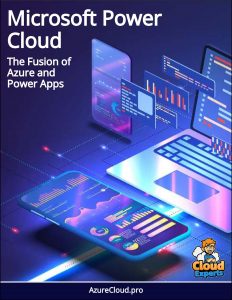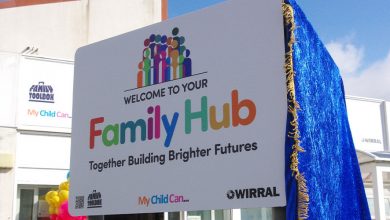Using Power Platform to track COVID-19 in public schools
In this video about #LessCodeMorePower, Dona and Sarah talk with Megan McCarthy who is an epidemiology Program Manager at Florida’s department of Health in in Sumter County. She has made an app that helps track COVID cases in her County.
 In this video about #LessCodeMorePower, Dona and Sarah talk with Megan McCarthy who is an epidemiology Program Manager at Florida’s department of Health in in Sumter County. She has made an app that helps track COVID cases in her County.
In this video about #LessCodeMorePower, Dona and Sarah talk with Megan McCarthy who is an epidemiology Program Manager at Florida’s department of Health in in Sumter County. She has made an app that helps track COVID cases in her County.
From 00:45, Dona introduces us to Megan who then tells about her academic and professional background and how did she become motivated to build app for her county’s public schools.
Megan has a long biomedical background and she is also currently studying biostatistics at the University of South Florida. In between all of her career, there is no tech background and yet she creates an app for the sake of her ease in work using Power Platform.
From 01:50, Dona tells us how has had to become a part of everyone’s lives in this era. Because now a days, we are all working form homes, closets and isolations. Megan then expresses how it became important for schools to regularly update the health department about the COVID situation. For example, who needs to be quarantined or if somebody is in isolation.
So, they had to come up with a way to track all these cases, and kids being quarantined and exclusions in school. First, they started with a huge Excel Spreadsheet but soon they realized it was not fast and reliable enough.
At 04:12, Megan gives us some description of the app and what it does. This app tracks every single person who is either quarantined or isolated. It helps the health department to communicate with the school, as who shouldn’t be in school, so that they can have absences excused. A parent isn’t able to just keep the children out school. They have to have a prior clearance from health department.
So, this app is able to mend the gap of talk between parents and health department where school functions as efficiently as possible and all of this has become possible due to PowerApps.
From 06:25, Megan actually starts to give us a demo of the app she has made. There is a person-under-investigation (PUI) library on the app, which shows people who are exposed to the COVID or are in isolation. The ones in isolation or actually sick show as green text. If a person is in quarantine, they are in black.
From 06:52, Megan tells the working of the app and how does the data get managed. If school reports that somebody has been exposed, they have to fill a form and type the information required by the health department. Which then gets generated in the SharePoint List and eventually comes up in the library discussed above. Where the department can refresh and check it regularly.
Each list item in the library when opened, contains all the information including name, phone numbers, address. The dates of exposure and quarantine duration fields are edited by the department in which PowerApps allows them to easily be able to edit or change the way they input data and the ways they get these dates settled very easily.
By settling these dates, they can be able to generate letters of quarantine or isolation stating, ‘’ you need to stay home for x amounts of days’’, if they need it. These letters are automatically emailed to the person who clicks the button for generating the letter.
The department can also release some information about all of their cases and contacts, which lets them know if they are cleared. The school also wants a letter for every single student and that is also released by the health department. So, they get these letters generated just with the click of a button as well. And that is also automatically emailed to the person who clicked the button.
From 11:00. Megan shares the experience of how by being in the biomedical field she developed this app and which platforms she used to know about the small tasks. She also reflects upon how this app reduced the man hours and paperwork required for all of this work.
At 13:00, Dona asks Megan if she has any homework for the audience who are currently getting started in PowerApps and are new in field. Upon which she reflects upon the most fun thing she did with PowerApps according to her, was the buttons to generate the letters. So, the audience should work with PowerApps and Power Automate to have a button results in Power Automate Flow, to grab a template and plug in information from the app into that template to have a finished form.
From 14:35, Megan also tells us that she is currently working on a new app that will help them track just any kind of outbreak of any kind of disease. At 15:25, Dona thanks Megan for joining them in this session and guiding the public to be better in some way.



